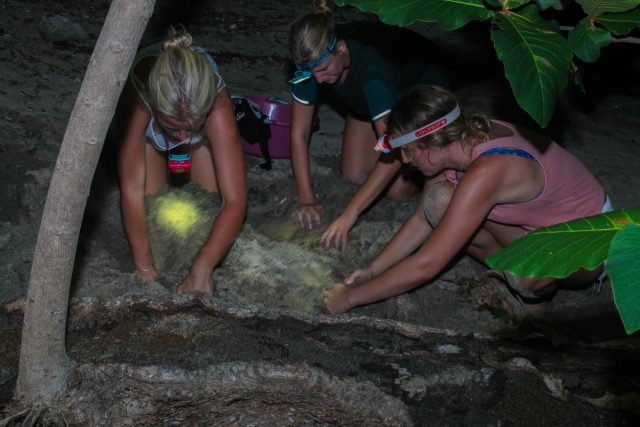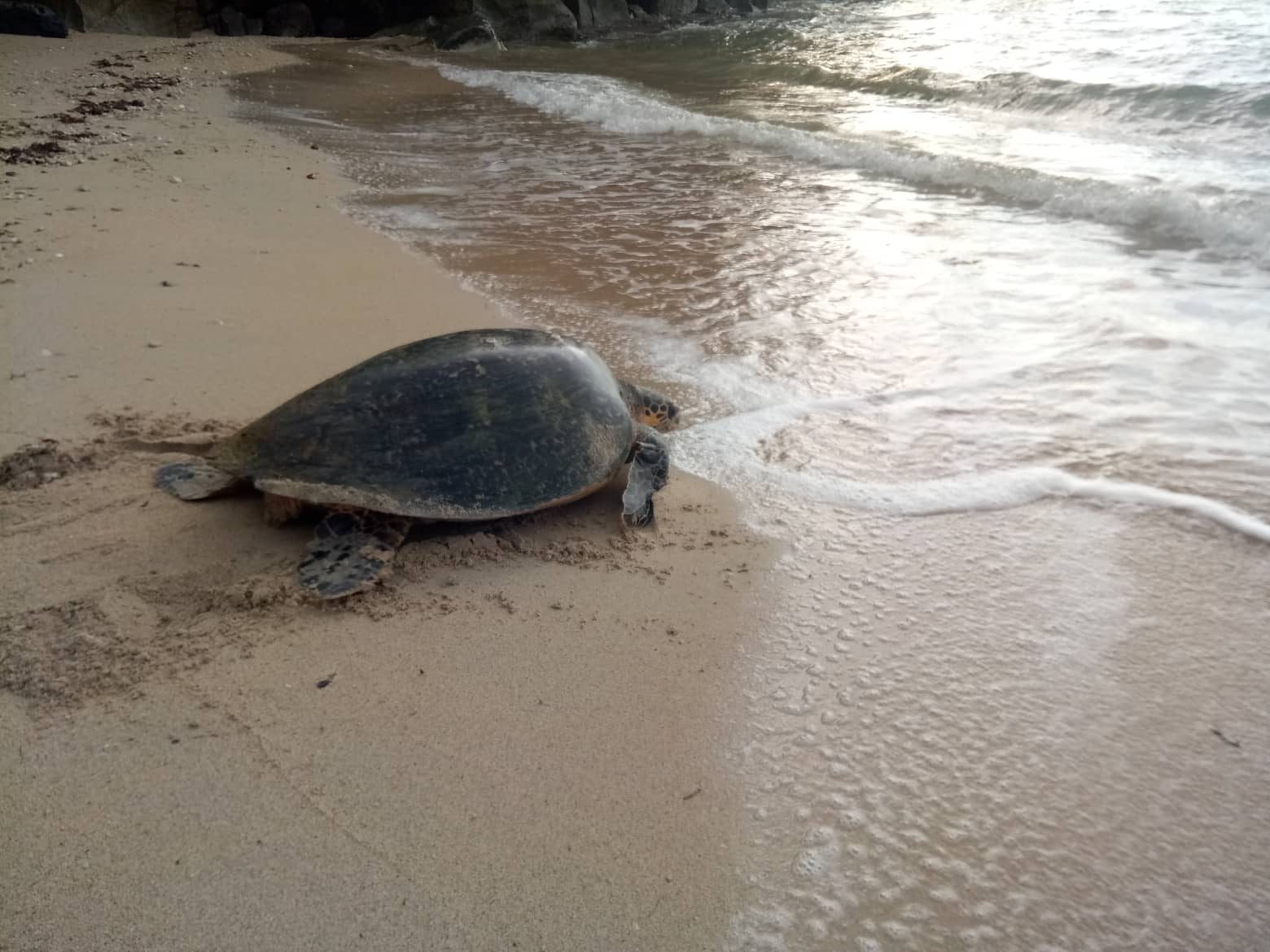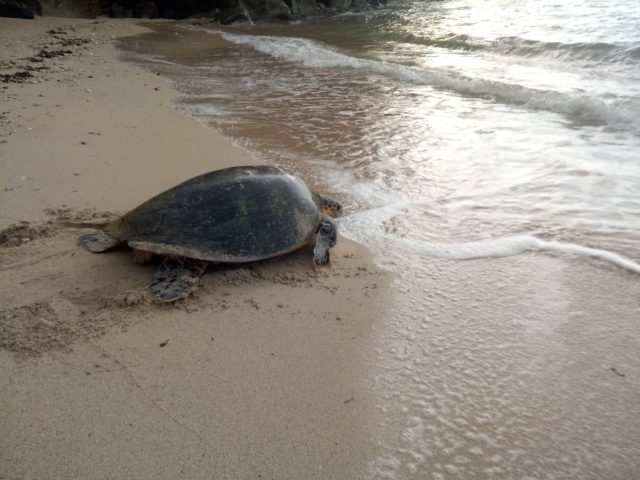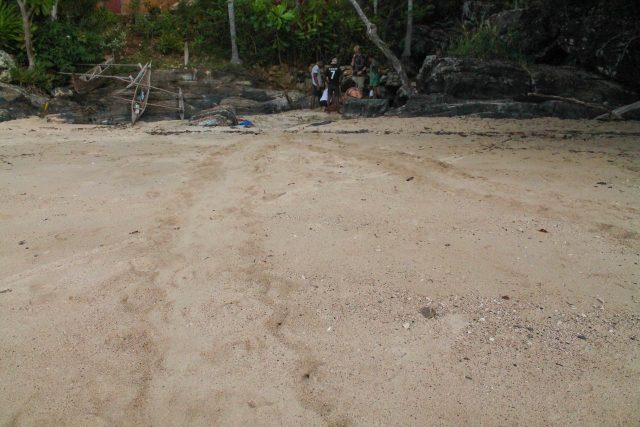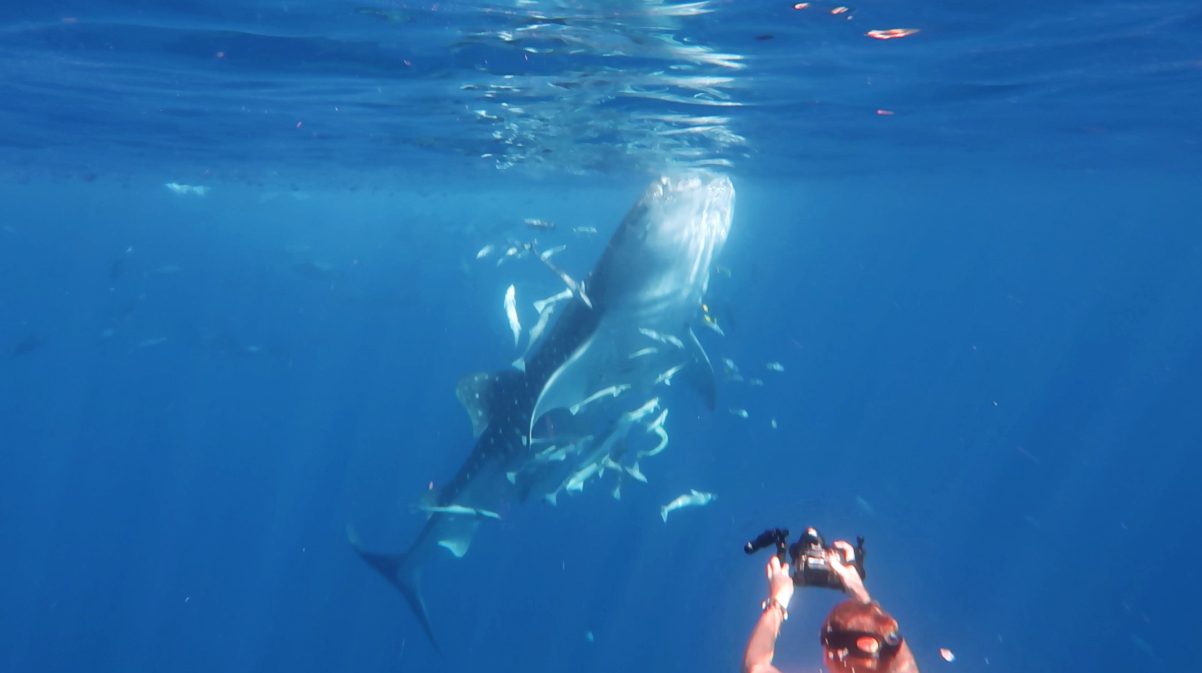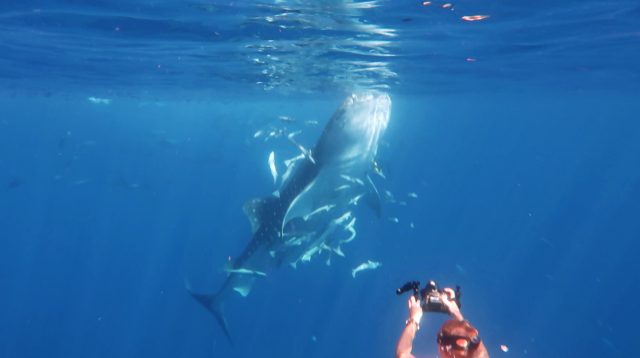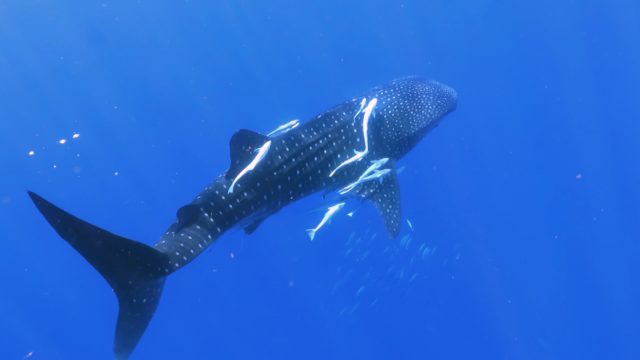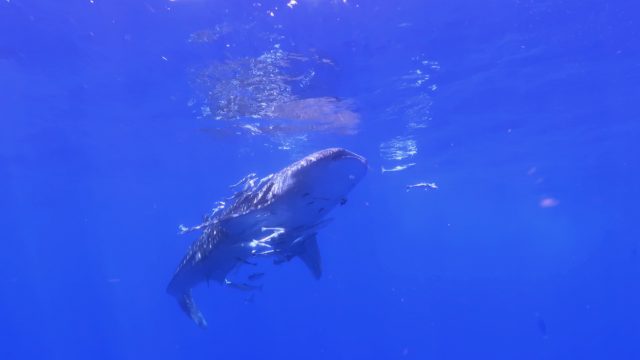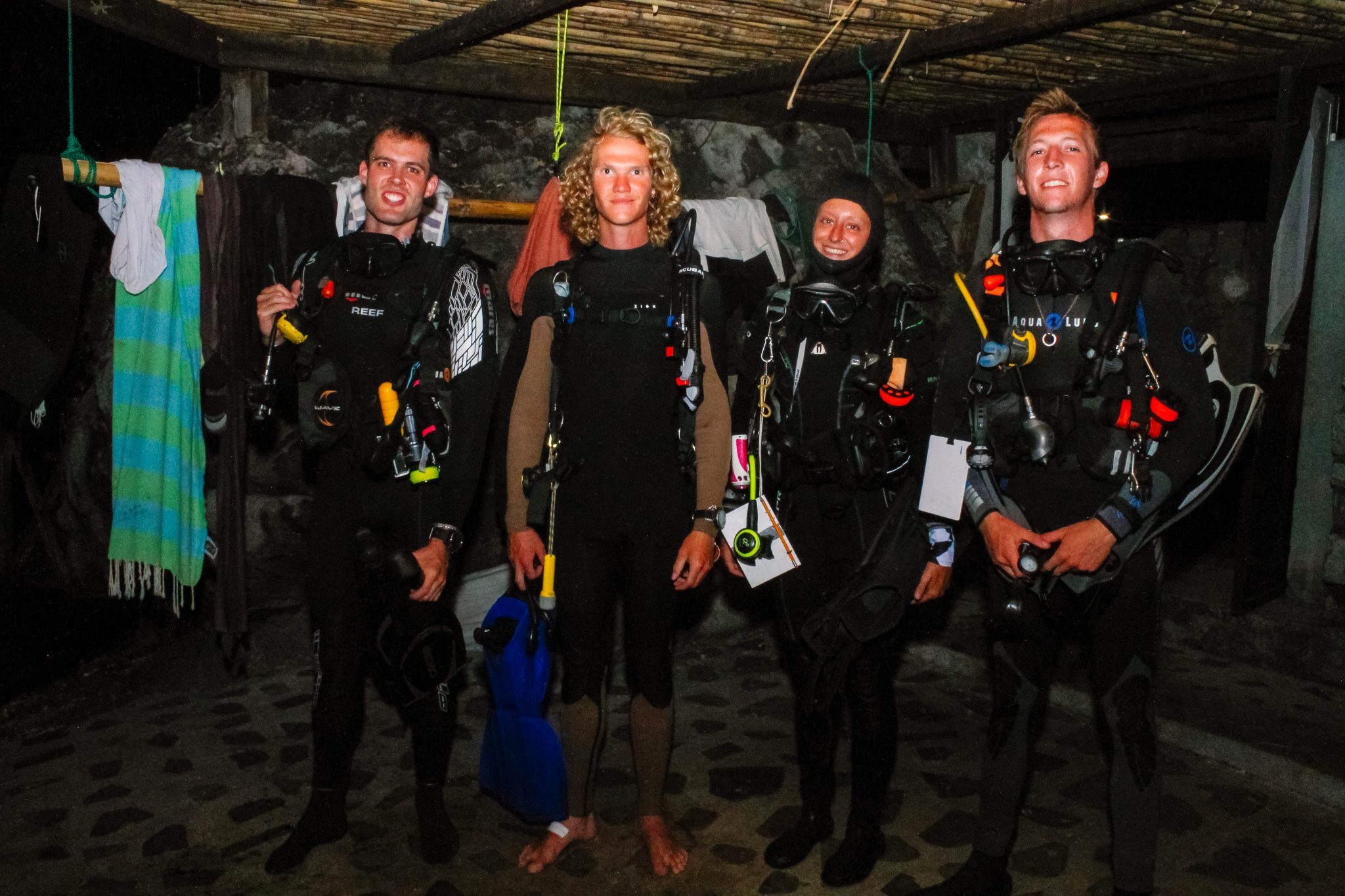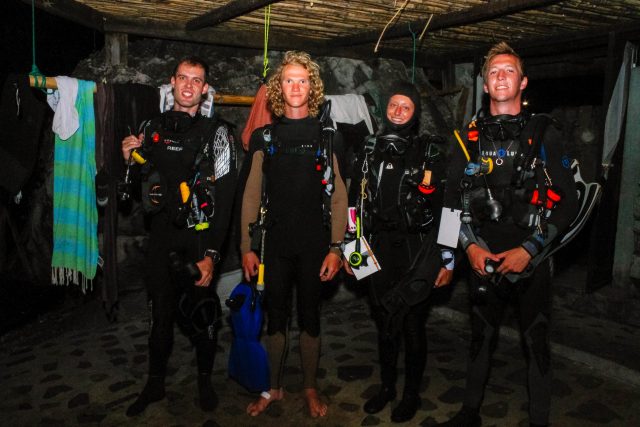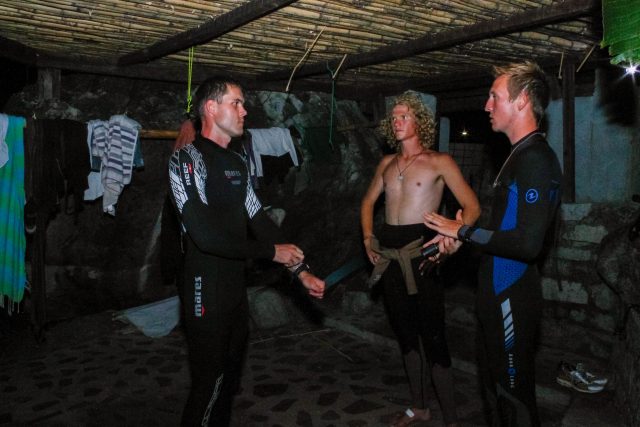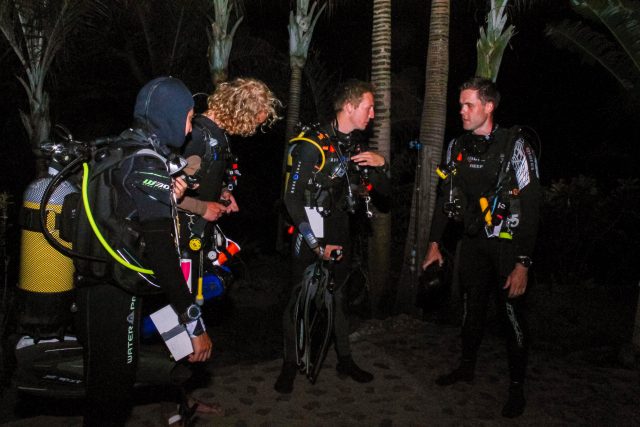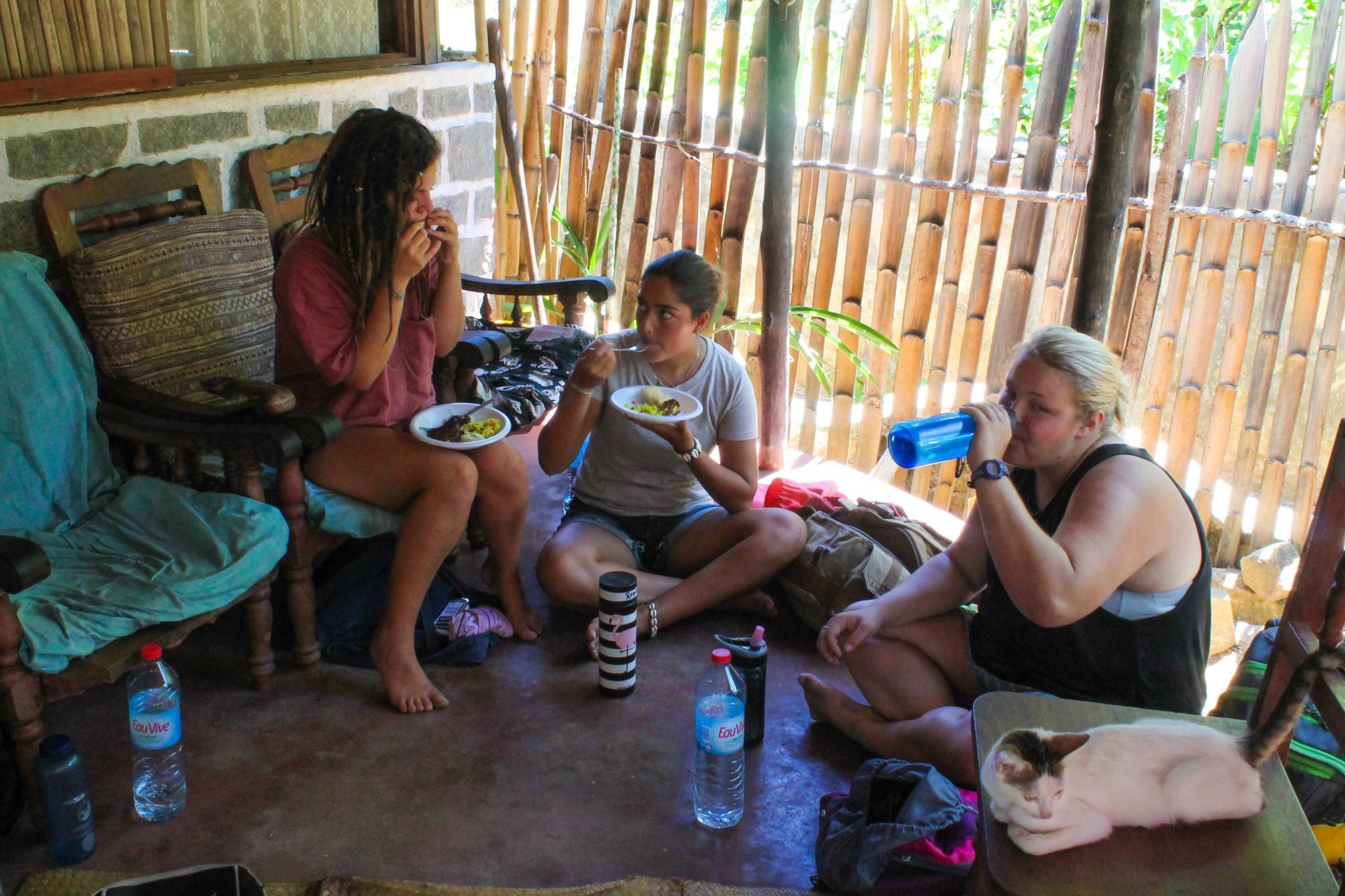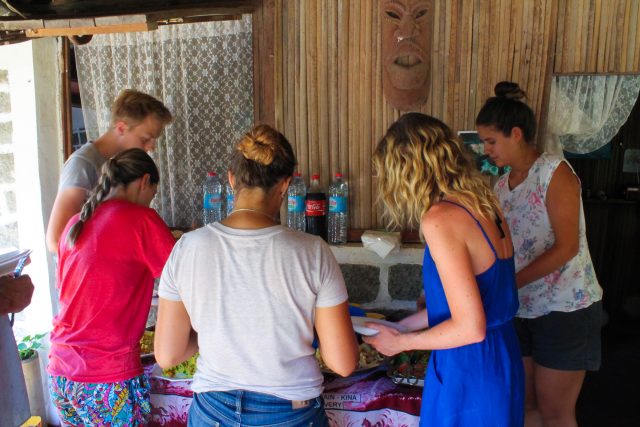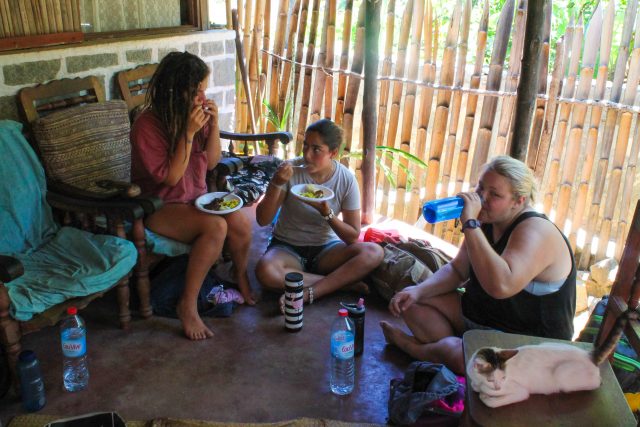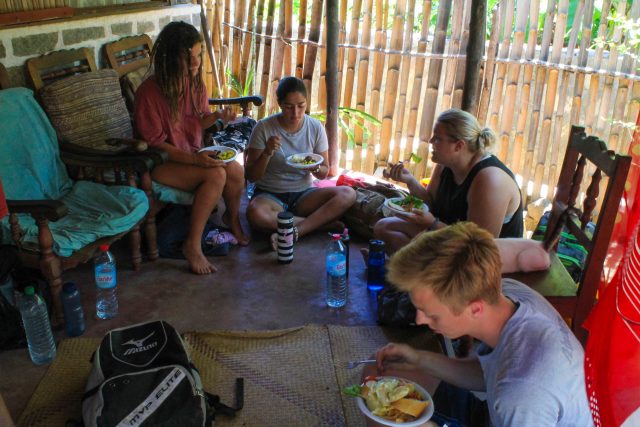Hawksbill Sea Turtle Nest
Hawksbill Sea Turtle Spotted Nesting Near Our Turtle Cove Camp
Last week a hawksbill sea turtle was spotted on Nosy Komba! Unlike the turtle that came onto our home beach this hawksbill sea turtle was actively digging a nest when it was spotted. The report we received placed the hawksbill sea turtle on a beach halfway between camp and Ampang Village. That description left two possible beaches. One of those beaches was wide enough for a turtle to nest on it with out the fear of the nest flooding, the other beach was not.
Our Turtle Monitoring staff with the help of two other staff members set off that evening to locate the nest to assess if it needed to be moved to a safer location. Our staff were relieved to find the tracks and signs of a possible nest on the preferable beach. From the tracks left up the beach our Turtle Monitoring staff were able to identify the turtle that came ashore as a hawksbill sea turtle. The location identified as the possible nest was still fairly neat leaving our staff unsure if the turtle actually did lay her nest there. It is possible that a turtle would come ashore, start digging, and deem a sight unsuitable and abandon the nest she started. Our Staff carefully began digging to see if she had in fact laid in the nest.
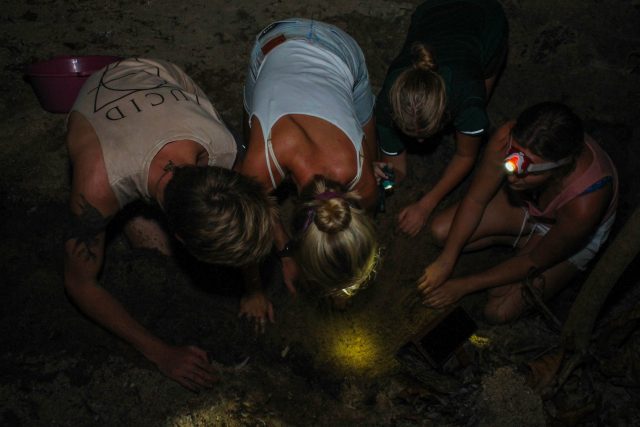
Everyone who was involved in digging wore clean gloves to insure no harmful chemicals would be coming into contact with the potential eggs. Common products like bug sprays, sunscreen, and even certain lotions contain chemicals which can be harmful to not just turtles, but most wildlife. After digging around the area to the appropriate depth and width it was agreed that the female did not lay her eggs in the nest. We were disappointed that we did not have an active nest, however the site of the nest was too close to the tide line so had she laid her nest there, it would have drowned if not moved. Moving a nest is a very delicate process because the embryo is attached to the lining in the egg and can easily be separated if not handled with extreme care. Nests should only be moved when it is absolutely necessary and only by those trained to do so. Our staff brought the appropriate materials to move the nest if they had to but were relieved that they would not have to interfere in the process.
If you want to help protect and conserve sea turtles then check out our new Volunteer Sea Turtle Monitoring Program for more information!
Follow us on Facebook & Instagram to keep updated daily!



